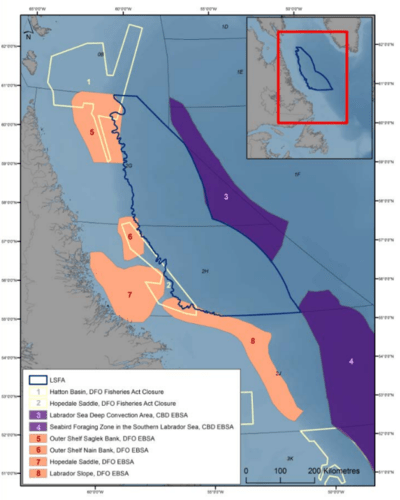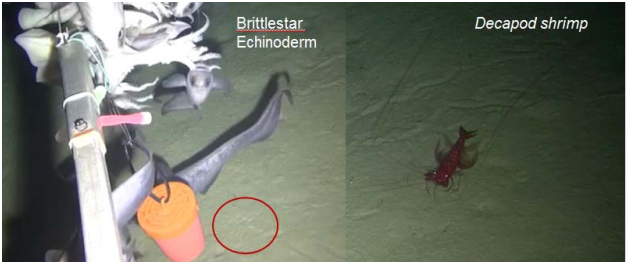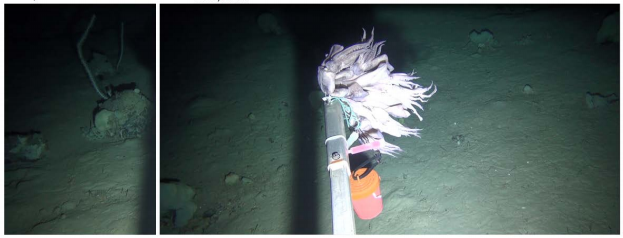SubC Autonomous Camera Solution Used in DFO Labrador Sea Frontier Area Study
SubC Imaging’s subsea cameras and equipment have been used to produce sound science to ensure healthy and sustainable aquatic ecosystems for many years
Bamboo coral, an important environmental indicator in terms of long-term client change studies, were observed during the deployment
With SubC equipment aiding sound science, researchers were able to start to fill some important LSFA data gaps on the characterization of mesopelagic fish, demersal fish and benthic community ecosystems
SubC Imaging has a long history of working with the Department of Fisheries and Oceans Canada (DFO). The main goals of both SubC and DFO focus on safeguarding our waters and supporting economic growth in the marine and fisheries sectors. SubC Imaging’s subsea cameras and equipment have been used to produce sound science to ensure healthy and sustainable aquatic ecosystems for many years.
SubC’s autonomous subsea camera solution was used in DFO’s biophysical and ecological characterization of the Labrador Sea Frontier Area (LSFA). Existing data from the LSFA confirms that the area supports year-round use by migratory marine mammals and fish. Many of the inhabitants are species of conservation concern while others are very sensitive to anthropogenic disturbance. At the time of this study existing data was very limited.
The Labrador Sea Frontier Area (LSFA)
Cutting Edge Equipment from SubC Imaging
SubC’s autonomous subsea camera solution consisted of a camera recording HD video for time lapse and high-resolution digital stills using LEDs mounted on a bait trap. The camera was programmable and the solution was powered by a battery system drawing very little power. This allowed for long deployments at sea to capture more data without the need for real-time control. Large amounts of data needed to be collected as the area was poorly understood and important ecosystem characterizations had to be observed before conservation objectives could be recommended.
With SubC equipment aiding sound science, researchers were able to start to fill some important LSFA data gaps on the characterization of mesopelagic fish, demersal fish and benthic community ecosystems.
Baited video captures of a brittlestar (ophiurida; red circle, left panel) and an Aristeidae shrimp (right panel) in the Labrador Sea Frontier Area.
In video captured by DFO, you can see the presence of brittlestars (Ophiurida) and shrimp (Caridea) at depths exceeding 2,000m. There are over 2,000 species of brittlestars and more than half of these species are found in deep waters, greater than 200m deep.
Bamboo corals (left panel) and sponge fields (right panel) observed during baited camera surveys in the Labrador Sea Frontier Area.
Observing Climate Change Indicators
Also observed during the deployment of the baited camera trap was Bamboo coral. These corals are an important environmental indicator in terms of long-term client change studies as some specimens have been discovered to be over 4000 years old. Deep-sea coral species are also very vulnerable to bottom trawling on the seafloor.
Examples of other species that were observed include krill, red shrimp, wolf fish, and hagfish.
Cost Effective Solutions
Conducting research in the harsh Labrador environment can be difficult. When working with a limited budget, it's vital to have the right equipment that will capture the best data possible. SubC Imaging’s autonomous camera solution reduces interface complexity and allows for the elimination of expensive cabling and infrastructure as it can be deployed on a simple wire winch. SubC’s 4K and HD subsea cameras supply power while the scripting feature allows the camera to operate independently without requiring an additional computer (or person) to send commands on a schedule.
You can find out more about our featured solution below in the technical details. If you have any questions, you can email team@subcimaging.com or fill out the form below.
Read more about DFO’s incredible findings in the references below:
References
Citation: Coté, D., Heggland, K., Roul, S., Robertson, G., Fifield, D., Wareham, V., Colbourne, E., Maillet, G., Devine, B., Pilgrim, L., Pretty, C., Le Corre, N., Lawson, J.W., Fuentes-Yaco, C. and Mercier, A. 2019. Overview of the biophysical and ecological components of the Labrador Sea Frontier Area. DFO Can. Sci. Advis. Sec. Res. Doc. 2018/067. v + 59 p.
Wikipedia - Brittlestar https://en.wikipedia.org/wiki/Brittle_star
Wikipedia - Bamboo Coral https://en.wikipedia.org/wiki/Bamboo_coral




